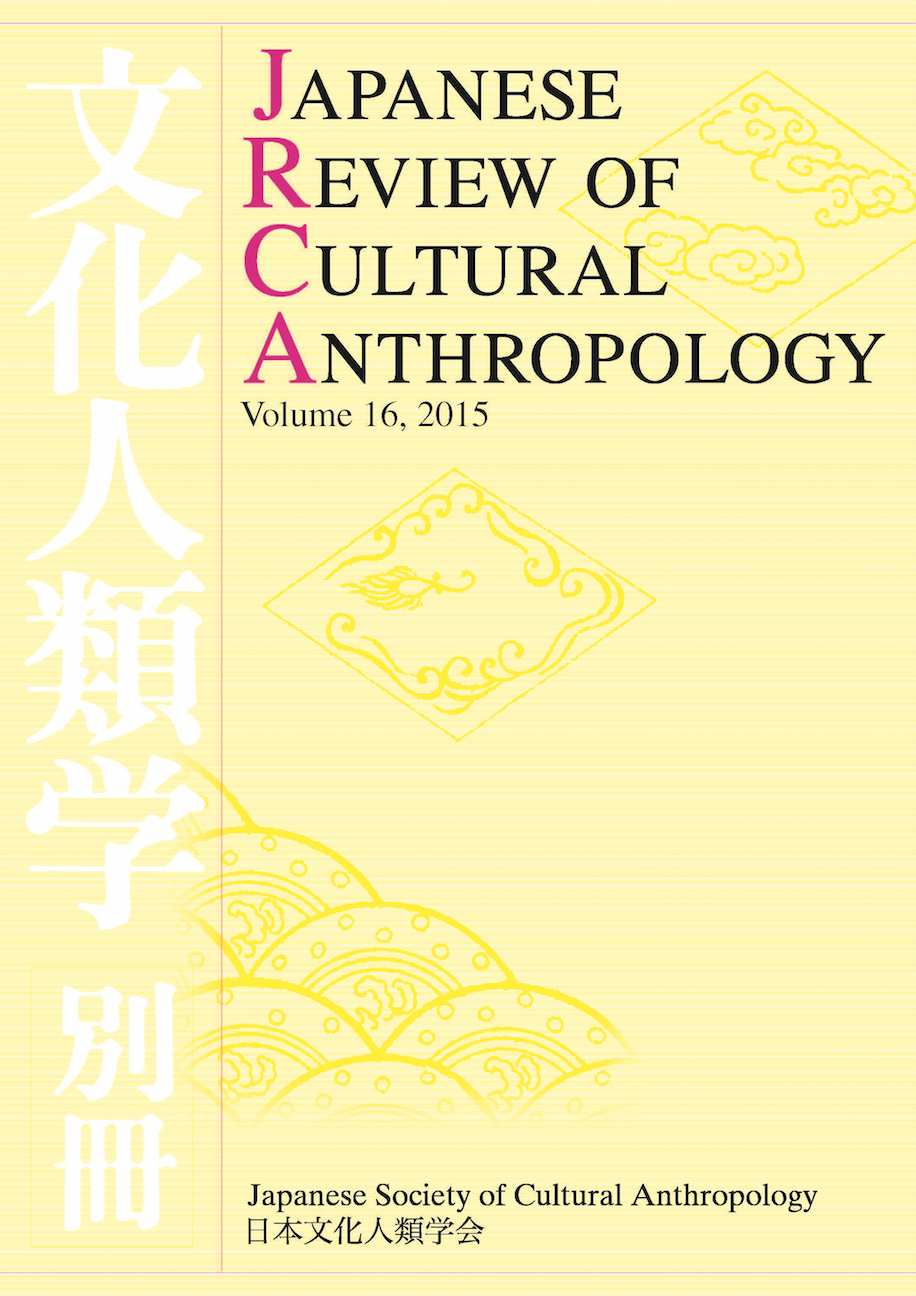5 巻
選択された号の論文の12件中1~12を表示しています
- |<
- <
- 1
- >
- >|
-
原稿種別: 表紙
2004 年 5 巻 p. Cover1-
発行日: 2004年
公開日: 2017/03/31
PDF形式でダウンロード (127K) -
原稿種別: 目次
2004 年 5 巻 p. Toc1-
発行日: 2004年
公開日: 2017/03/31
PDF形式でダウンロード (28K) -
原稿種別: 付録等
2004 年 5 巻 p. App1-
発行日: 2004年
公開日: 2017/03/31
PDF形式でダウンロード (46K) -
Continuity through Change in Korean Family/Household Structure : An Essay in Historical Anthropology原稿種別: 本文
2004 年 5 巻 p. 3-28
発行日: 2004年
公開日: 2017/03/31
PDF形式でダウンロード (1875K) -
原稿種別: 本文
2004 年 5 巻 p. 29-53
発行日: 2004年
公開日: 2017/03/31
PDF形式でダウンロード (2206K) -
原稿種別: 本文
2004 年 5 巻 p. 55-89
発行日: 2004年
公開日: 2017/03/31
PDF形式でダウンロード (3218K) -
原稿種別: 本文
2004 年 5 巻 p. 91-121
発行日: 2004年
公開日: 2017/03/31
PDF形式でダウンロード (2885K) -
原稿種別: 本文
2004 年 5 巻 p. 123-151
発行日: 2004年
公開日: 2017/03/31
PDF形式でダウンロード (2495K) -
原稿種別: 付録等
2004 年 5 巻 p. 153-154
発行日: 2004年
公開日: 2017/03/31
PDF形式でダウンロード (89K) -
原稿種別: 付録等
2004 年 5 巻 p. 155-156
発行日: 2004年
公開日: 2017/03/31
PDF形式でダウンロード (79K) -
原稿種別: 付録等
2004 年 5 巻 p. App2-
発行日: 2004年
公開日: 2017/03/31
PDF形式でダウンロード (31K) -
原稿種別: 表紙
2004 年 5 巻 p. Cover2-
発行日: 2004年
公開日: 2017/03/31
PDF形式でダウンロード (25K)
- |<
- <
- 1
- >
- >|
